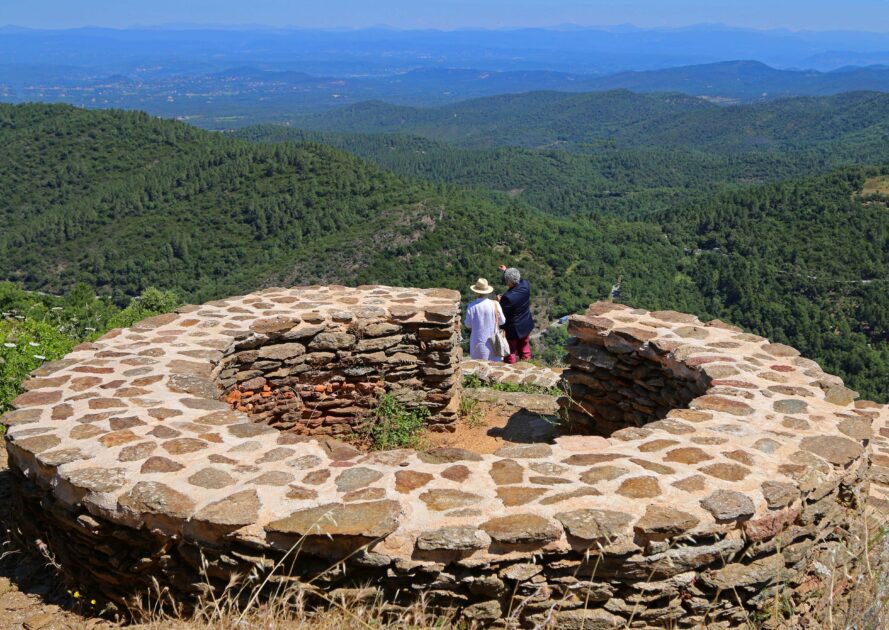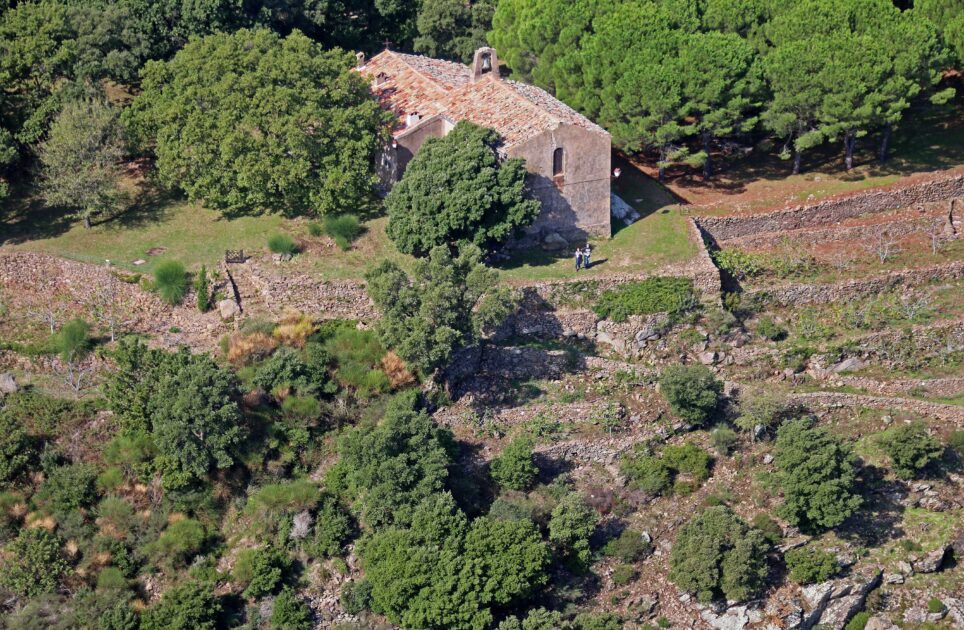Home Explore The villages of the Gulf to discover
La Garde-Freinet
An island in the forest
Whether you’re coming from the plain of Le Luc or from the coast, a winding road will take you to La Garde-Freinet, a picturesque and discreet Provencal village in the heart of the Maures massif, the starting point for unforgettable walks. Jeanne Moreau made it her home and filmed Lumière here.
A PROVENCAL VILLAGE
The charm of La Garde-Freinet lies in its red-tiled stone houses, which stretch from the valley to the hillside. As you stroll along its steep streets, lined with ivy-covered facades, you’ll discover treasures such as a church, a chapel, a wash-house and a spring-fed fountain. The village seems frozen in time, and the days pass peacefully on the terraces of the cafés-restaurants, waiting for petanque to be played. The Provençal market livens up the pedestrianised street on Sundays and Wednesdays, where you’ll find local produce such as fresh vegetables from the surrounding kitchen gardens, walnut bread from the local baker and handmade chestnut cream. In October, the Fêtes de la Châtaigne attracts gourmets from far and wide to sample marrons glacés, hot chestnuts and chestnut chip ice creams. It’s a real treat for the taste buds.
LA GARDE-FREINET THE NATURE RESORT
La Garde-Freinet is the starting point for a host of walks, mountain bike rides and horse-riding tours, with or without guides, offering a total immersion in the Maures massif. You can get a better idea of the extent of this ocean of vegetation by reaching the orientation table overlooking the village, near the monumental cross: from the Maures plain to Notre-Dame de Miremer, from Plan de la Tour to Collobrières, nature is grandiose, adorned in its infinite shades of green. Finally, if you decide to venture out on the Route des Crêtes, one of the most beautiful trails in the Var, you’ll be rewarded with an exceptional view. However, there is one place in particular that stands out: the Roches Blanches. This vein of sparkling quartz emerging from the schist offers a touch of white that is unique in the area. Welcome to the Massif des Maures, a realm of endless panoramas. Prepare to be amazed by the beauty of this place.

A HERITAGE TO DISCOVER
Apart from the festive period and the Bravade in April, the village’s air of tranquillity actually masks intense cultural activity, with beautiful art galleries, intimate concerts, ancestral skills being honed by La Garde Freinet craftsmen, in addition to a wealth of heritage and tradition. Head for the Saint-Jean Chapel if you need convincing, to the Conservatoire du Patrimoine (heritage museum). They will tell you about Fort Freinet, one of the first to be built in the village, perched on its rocky dome in medieval times, the chapels of Saint-Clément and Miremer, the Adrech windmill, history of cork, basketry, beekeeping and even silkworms.
LET’S GO FOR A WALK
From the Tourist Office, cross Place de l’Hôtel-de-Ville, follow Rue de l’Ormeau to reach Place du Marché and bandstand (1872), once a fish market. On the right, a washhouse (1812), further on the Vieille Fountain. Head to Rue de la Vieille-Caserne, then Place de la Vieille Mairie with the prison. Cross Place de l’Amour to Rue Saint-Joseph: you are now at the site of the old threshing floor. Go up to Aire de la Planète, starting point for hikes to the big cross and Fort-Freinet. Return to Saint-Clément church built early 15th century (bell tower). From Place du Baou head for Place Vieille.
A LITTLE BIT OF HISTORY

In the 10th century, there were three settlements on the current La Garde-Freinet territory: on Miremer hill, then called Miramar, around Saint-Clément Chapel and lastly near the hamlet of La Mourre. At the end of the 12th century, for security reasons, these three populations re-settled on Fort Freinet hill. This impressive and majestic rocky site shows how the houses and a large moat were cut into the rock. For centuries people mistakenly thought it was a haunt of the Saracens who lived in Provence in the 10th century. From the late 13th century onwards, its inhabitants gradually moved to settle on a route linking the Maures plain to the Gulf of Saint-Tropez, on the site of the current village called La Garde.
NOT TO BE MISSED
• Fort Freinet : remarkable listed nature site with its old moat carved into the rock.
• Saint-Clément Chapel: revisited by Italian sculptor Di Teana in the 1960s.
• In the village: streets and alleys, old houses. Weekly Provencal market , Place Neuve, Place du Marché with its bandstand (old fish market). Beautiful old fountains and washhouses.Art galleries. Heritage museum (exhibitions, permanent and temporary; including a model of the original Fort Freinet).
Saint-Jean Chapel (exhibition area).
• Hiking and mountain biking circuits.
PANORAMAS
• Fort Freinet : amazing lookout at 450m which dominates the whole Mediterranean side of the Maures, the Argens plain and Alpes de Provence.
• La Croix des Maures: a large cross below Fort Freinet, with panorama and view of the village.
• Les Roches Blanches, highest point in the municipality at 638m: incomparable scenery and view.
• Orientation table in the heights of the village.

INFORMATION
Office de tourisme communautaire du Golfe de Saint-Tropez – Bureau de La Garde-Freinet
Catégorie 2 – Label « Villages de caractères du Var » Chapelle Saint-Jean – RD 558
83680 La Garde-Freinet
33 (0)4 94 56 04 93 – lagardefreinet@golfe-sainttropez-tourisme.fr
Tourist office website: www.golfe-sainttropez-tourisme.fr
Destination website: www.visitgolfe.com
9 results











